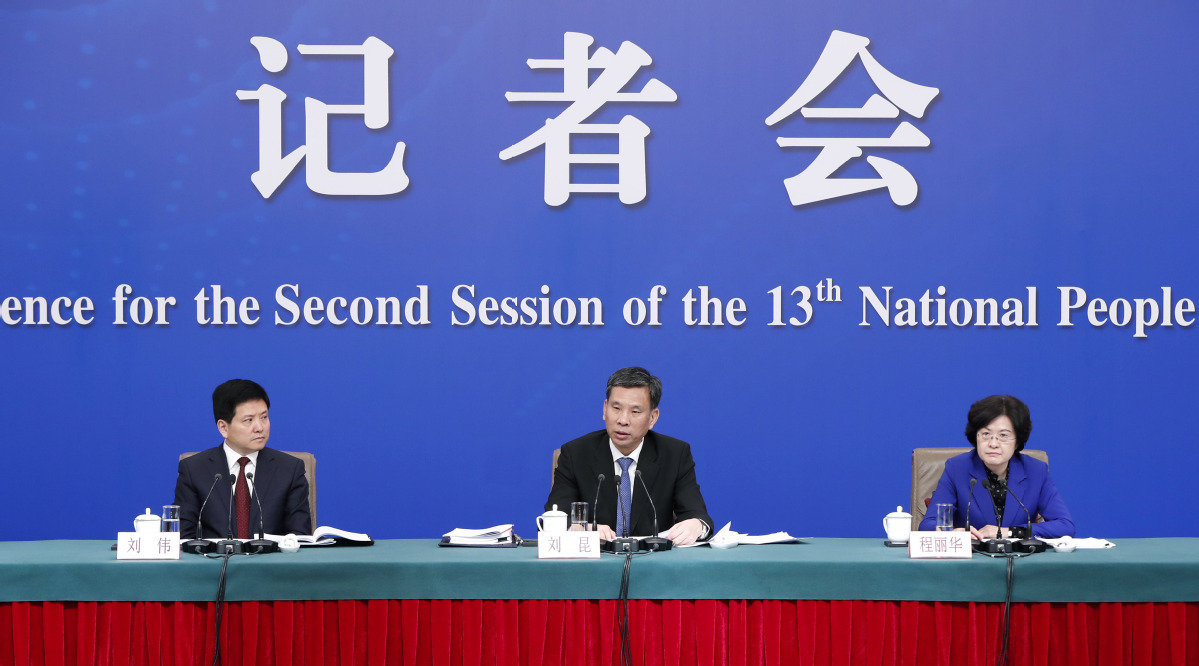Highlights of news conference of the Ministry of Finance
 0 Comment(s)
0 Comment(s) Print
Print E-mail chinadaily.com.cn, March 7, 2019
E-mail chinadaily.com.cn, March 7, 2019

Liu Kun, minister of Finance, and Vice Ministers Cheng Lihua and Liu Wei answered questions regarding reform of fiscal and taxation system and financial issues at a press conference during the second session of the 13th National People's Congress on March 7, 2019.
Here are the highlights:
Tax cuts a top priority: Liu Kun
Tax cuts remain a top priority of China's proactive fiscal policy this year, and the country will cut nearly 2 trillion yuan in taxes and pension payments, said Minister of Finance Liu Kun.
China will further VAT reform in 2019 to ensure tax will only be cut, rather than increased. The VAT rate will be lowered from 16 percent to 13 percent for the manufacturing sector, and from 10 percent to 9 percent for transportation and construction sectors, Liu said.
The country will promote inclusive tax cut and structural tax cut simultaneously, lowering tax burden of manufacturing and small and micro enterprises.
Meanwhile, the government will continue to relieve the burden on businesses, lower contribution rates that enterprises must pay for the basic pension insurance, and the required contribution rates could be cut to 16 percent.
Central govt fights poverty with over 120 billion yuan: Liu Kun
The central government will allocate 126.1 billion yuan to fund poverty alleviation in 2019, said Minister of Finance.
Central govt to spend 350+ billion yuan on science, tech: Liu Kun
China's central government will spend 354.3 billion yuan ($52.8 billion) on R&D and science and technology this year, up 13.4 percent year-on-year, said Minister of Finance Liu Kun. The ministry will also increase infrastructure investment by 40 billion yuan to 577.6 billion yuan, Liu said.
China's debt-GDP ratio lower than EU's alert line: Liu Kun
China's government debt stood at 33.35 trillion yuan ($4.97 trillion) by the end of 2018, accounting for 37 percent of the country's GDP. The figure is significantly lower than the EU's alert line of 60 percent, Minister of Finance, Liu Kun, said. China's debt-GDP ratio was also lower than both the major market economies and emerging markets.





